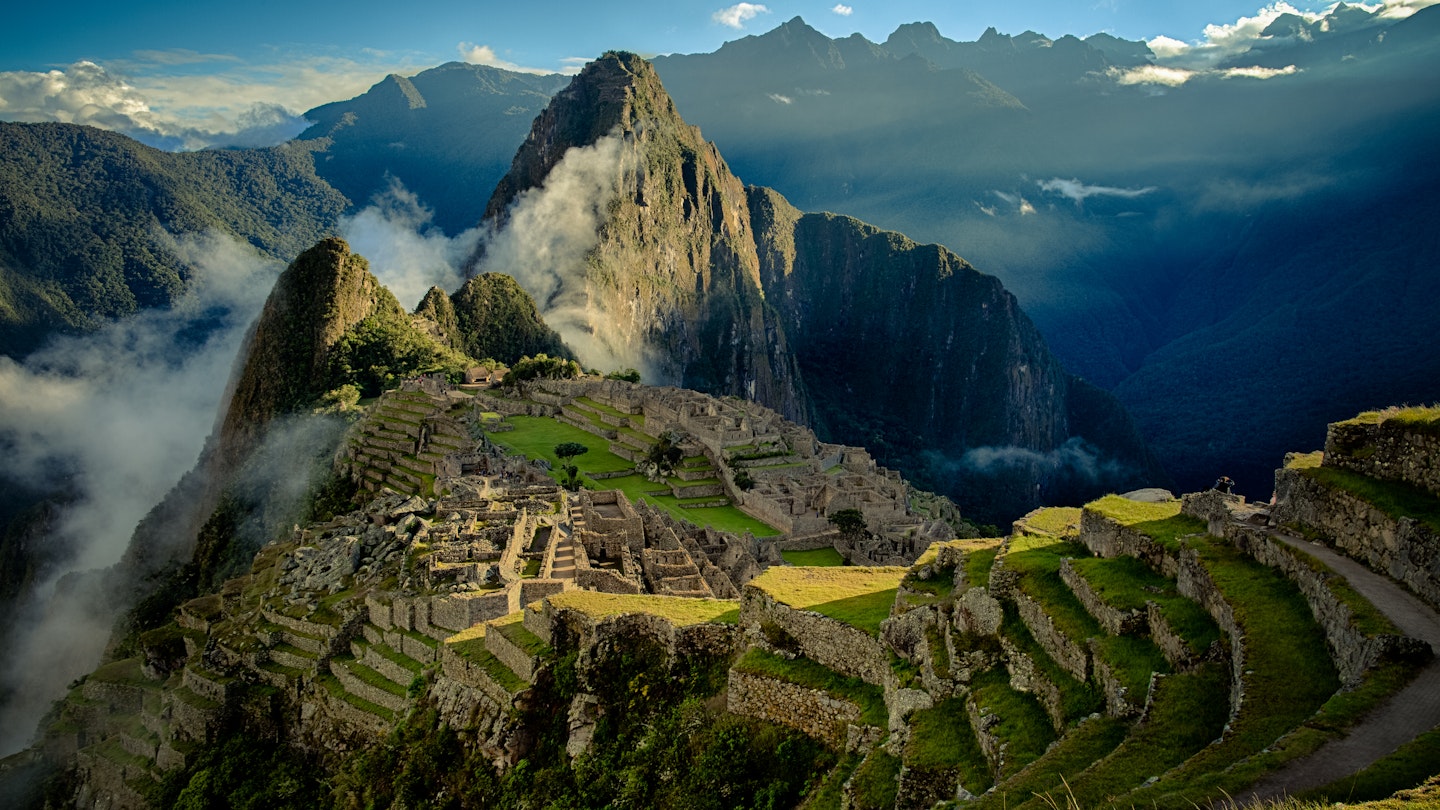In the past decade, Peru has remained a top destination for adventurous travelers thanks to its incredibly diverse ecosystems, rich terrain, and vibrant cultures. Moreover, the country boasts award-winning restaurants and a tantalizing street food scene that invites endless exploration.
To top it off, there’s the ancient mountain, Machu Picchu, nestled in the Sacred Valley, which was once the heart of the Inca Empire. Located at an impressive altitude of nearly 8,000 feet (approximately 2,430 meters), Machu Picchu continues to attract international interest since its rediscovery in 1911. In fact, it has become one of the most sought-after archaeological sites in all of South America.
Understanding the allure and majesty of this high-altitude site requires us to delve deeper into the meaning, history, and importance of Machu Picchu.
Editor’s note: check local travel restrictions before visiting and always follow government health advice.
What is Machu Picchu?
Meaning “ancient mountain” in Quechua, one of Peru’s many indigenous languages, Machu Picchu transformed from a simple summit to a sacred site during the rule of the Inca Empire in the mid-15th century. Located about 45 miles (75 km) northwest of Cuzco city, the trek to Machu Picchu attracts many nature lovers, showcasing the beautiful countryside setting that allowed the Incas to hide from potential invaders.
Thousands of steps – some carved into over 100 staggered terraces – lead to an expansive stone citadel complete with plazas, ritualistic areas, and an intricate irrigation system. There were also living quarters for Inca royalty and a multitude of guards, servants, and approximately a thousand more people. While it’s unclear whether Machu Picchu served as a seasonal retreat or long-term residence for the Inca elite, the site incorporates all core elements of the ancient culture: agriculture, astronomy, spirituality, and a harmonious society.
History of Machu Picchu
Machu Picchu is an icon of the Inca civilization, originally suited for an emperor. It is widely believed the citadel was built for Inca Pachacuti, who ruled from 1438 until his death in the early 1470s, marking an era of conquest and expansion of the Inca Empire (Tawantinsuyu), the largest empire in pre-Columbian America.
Archaeologists estimate construction began around 1450, taking decades to complete. However, less than a century after the first stone wall had been erected, Spanish conquerors encroached on what is now the Cuzco region. Remote and off the radar, this tropical mountaintop remained safe from unaware Spanish intruders, yet was ultimately abandoned by its inhabitants seeking safety elsewhere.
In 1911, American explorer Hiram Bingham, guided by local peasant farmers, ascended the famous mountainside to the citadel, which was overgrown with dense jungle. While this site was not a secret to locals, it became a delightful surprise for international visitors, who began a lasting tradition of traveling to Peru inspired by Bingham’s discoveries.
In recent decades, Machu Picchu has received numerous titles, including Peruvian Historical Sanctuary (since 1981), UNESCO World Heritage Site (1983), and one of the New Seven Wonders of the World (2007).
Special features of Machu Picchu
● Temple of the Sun
The curved wall of this temple integrates a large ceremonial stone at the base, forming a cave-like area. This temple honors Inti, the Sun god, with light streaming in through the eastern-facing windows during both the winter and summer solstices. This showcases the Incas’ mastery in astronomy, religion, and architectural design.
● Inti Watana
Also known as “Intihuatana,” this ritual stone, meaning “hitching post of the sun,” is found in the Urban Sector of the citadel. Likely used as a sundial or astronomical calendar, the 2-meter-high slab aids the Incas in tracking the sun’s movements and seasons, thus facilitating agricultural and ritualistic planning.
● Museo de Sitio Manuel Chávez Ballón
This small but informative museum is located a 20-minute walk from Aguas Calientes. It provides dynamic displays that illuminate the building methods used by the Incas and showcases excavations that took place centuries later. Visitors can also enjoy a stroll through the museum’s Botanical Garden.
● Huayna Picchu
While not as widely recognized, Huayna Picchu is often depicted alongside Machu Picchu in photographs. Although it involves a steeper, more challenging hike, those in good physical condition should not miss the fantastic views of Machu Picchu and the expansive Inca territory from the peak.
Planning your trip to Machu Picchu
Machu Picchu has been temporarily closed due to COVID-19 restrictions. Although the reopening date remains uncertain, new protocols will ensure the safety of travelers while conserving the historical site. The implementation of social distancing measures – including smaller tour groups and reduced visitor capacity – grants travelers greater opportunities to connect with the surrounding natural and spiritual environment, in alignment with Inca traditions.




